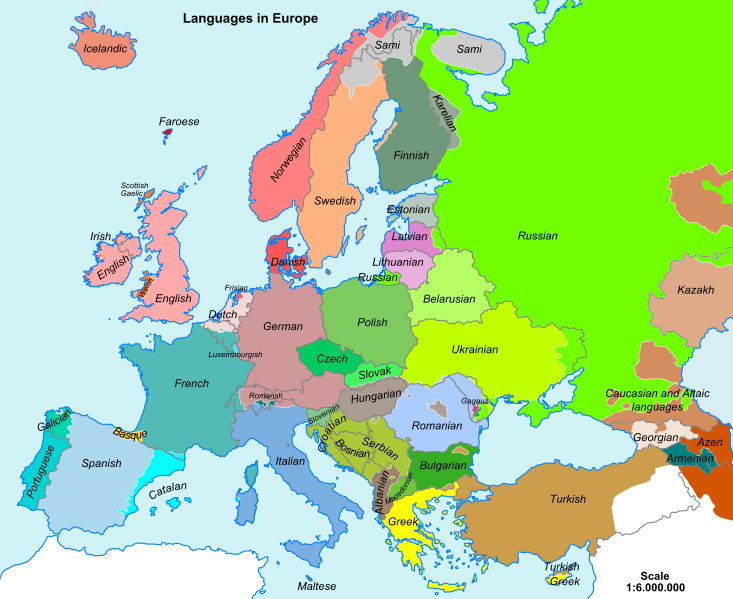Difference between revisions of "What is the population of the EU and how is it distributed?"
| Line 38: | Line 38: | ||
* Age structure: (2006 est.) <br\> | * Age structure: (2006 est.) <br\> | ||
0–14 years: 16.03% (male 37,608,010/female 35,632,351) <br\> | 0–14 years: 16.03% (male 37,608,010/female 35,632,351) <br\> | ||
15–64 years: 67.17% (male 154,439,536/female 152,479,619)<br\> | 15–64 years: 67.17% (male 154,439,536/female 152,479,619)<br\> | ||
65 years and over: 16.81% (male 31,515,921/female 45,277,821)<br\> | 65 years and over: 16.81% (male 31,515,921/female 45,277,821)<br\> | ||
* Birth rate: 10.9 births/1,000 population 2008 | * Birth rate: 10.9 births/1,000 population 2008 | ||
* Death rate: 9.7 deaths/1,000 population 2008 | * Death rate: 9.7 deaths/1,000 population 2008 | ||
Revision as of 12:14, 13 September 2009
Population
The population of Europe varies as per the exact definition of Europe. However, as per 2009 the population of the EU was estimated to be about 499 million. Non EU countries situated entirely in Europe account for another 94 million. Another 5 transcontinental countries account for 240 million, of which about half reside in Europe.
The most populous member state is Germany, with an estimated 82.1 million people, and the least populous member state is Malta with 0.4 million. Birth rates in the EU are low with the average woman having 1.5 children. The highest birth-rates are found in the Republic of Ireland with 16.876 births per thousand people per year and France with 13.013 births per thousand people per year. Germany has the lowest birth rate in Europe with 8.221 births per thousand people per year.
As it stands now, around 12% of the world's people live in Europe, but if demographic trends keep their pace, Europe's share may fall to around 7% in 2050.
Religion
The EU itself is a secular body, i.e., there is a separation of church and state. There are no formal ties to any religion and no mention of religion in any current or proposed treaty.
However, religion in the European Union is diverse, although primarily Christian. The European Union is secular, despite there being state churches (typically Protestant) in a number of the member countries, for example the Church of England. In recent times, there has been an increase in secularisation in most countries in EU, while a few have not experienced such developments.
The most common religious belief in the EU is Christianity. European Christianity can be roughly divided into Roman Catholicism, a wide range of Protestant churches (especially in northern Europe) and Eastern Orthodoxy (in south eastern Europe).
Immigration has introduced other religions into European countries, most notably Islam. It was estimated that the Union's Muslim population in 2006 was 16 million people.[4] The country with the largest percentage of Muslims in Western Europe is France with 8%-10%. Aside from Turkey, the only possible future member to have a majority of Muslims is Albania, although other Balkan states also have sizeable Muslim populations.
Language
The European Union (EU), which currently excludes Norway, Switzerland and many eastern European countries, recognises 23 official languages as of 2007.[8] According to the same source, the seven most natively spoken languages in the EU are (percentage of total European population[9]):
Modern Linguistic Map of Europe
- 19% German
- 13% French
- 12% English
- 11% Italian
- 9% Spanish
- 9% Polish
- 6% Romanian
- 5% Dutch
Miscellaneous statistics
- Age structure: (2006 est.) <br\>
0–14 years: 16.03% (male 37,608,010/female 35,632,351) <br\> 15–64 years: 67.17% (male 154,439,536/female 152,479,619)<br\> 65 years and over: 16.81% (male 31,515,921/female 45,277,821)<br\>
- Birth rate: 10.9 births/1,000 population 2008
- Death rate: 9.7 deaths/1,000 population 2008
- Net migration rate: 3.1 migrant(s)/1,000 population 2008
- Marriage rate: 4.9 marriages/1,000 population 2007
- Divorce rate: 2.0 divorces/1,000 population 2005
- Sex ratio: (2006 est.)
at birth: 1.06 male(s)/female<br\> under 15 years: 1.06 male(s)/female<br\> 15–64 years: 1.01 male(s)/female<br\> 65 years and older: 0.69 male(s)/female<br\> total population: 0.96 male(s)/female<br\>
- Infant mortality rate: 2005
total: 4.5 deaths/1,000 live births<br\>
- Life expectancy: 2005
total population: 78.9 years <br\> male: 75.8 years<br\> female: 81.9 years<br\>
- Total fertility rate: 1.43 children born/woman 2008
- Live Births outside marriage: 33.0% of total live births 2005
